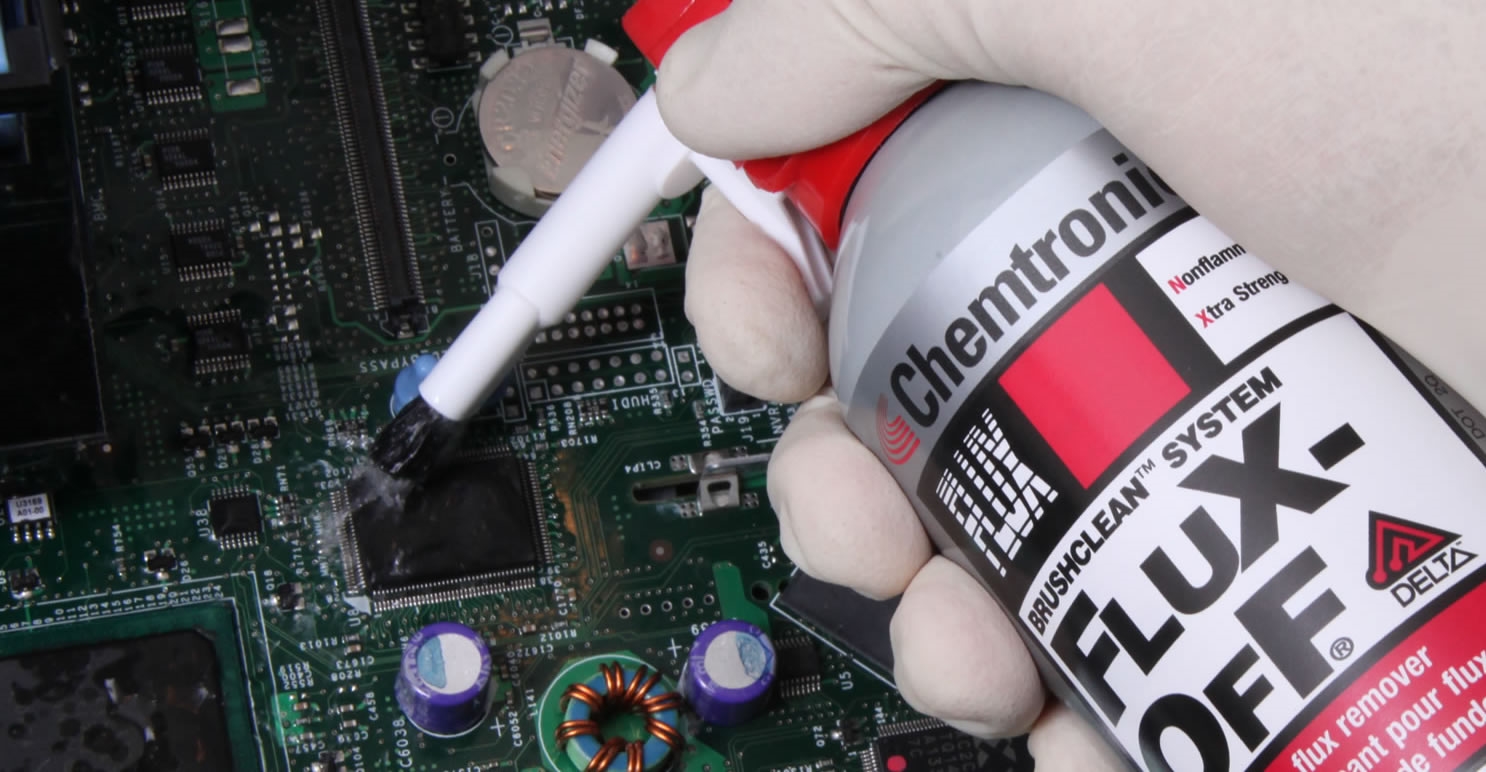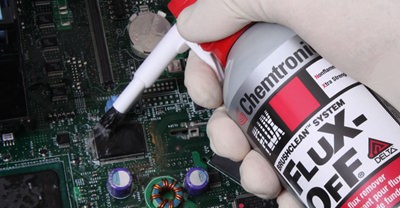The cleaning method best for your operation depends on your volume, throughput desired, criticality of the electronics, regulatory restrictions, floor space and other practical considerations. All defluxing processes basically involve 1) dissolving the flux residue, 2) flushing off the dissolved residue, and 3) drying the printed circuit board assembly (PCBA). The following are the general methods used to clean PCBAs:
- Manual cleaning - This can involve aerosol or pump sprays, or solvents in a pan or tray. Agitation can be applied with a brush, swab or wipe. This method is best for low volume cleaning of non-critical electronics (e.g. IPC class 1), because it is operator dependant, so not easily repeatable.
- Ultrasonic - This method uses sonic (sound) waves to create bubbles, which implode on the PCBA surface to break up the flux residues. This is an aggressive cleaning method, which can be a problem for sensitive components (e.g. ceramic). Because the dissolved flux residues flow back into the cleaning solution, the cleaner needs to be monitored and changed often to prevent cross-contamination.
- Vapor degreasing - The cleaning is done either in the vapor phase of a solvent, or submerged in a sump, which often includes ultrasonic action. Since the final rinse always happens in the vapor phase, this is an ideal cleaning method for critical applications where residue cannot be accepted.
- Batch or inline systems - Spray equipment is used to wash, rinse, and dry the PCBAs. Water or water-based cleaners are most commonly used as the cleaning solution. This cleaning method is good for high volume cleaning, and is repeatable enough for critical applicaitons.
Click here for a how-to video on PCB cleaning.
Ask A Technical Question
Stay up-to-date on Chemtronics news, products, videos & more.



